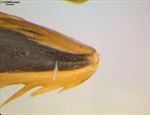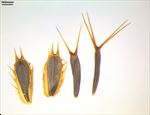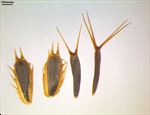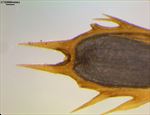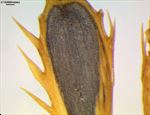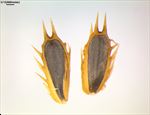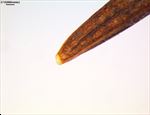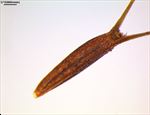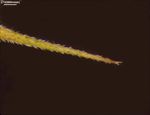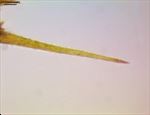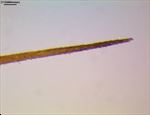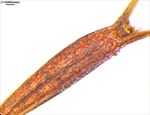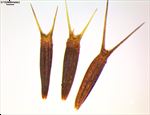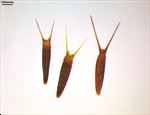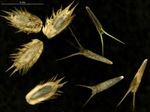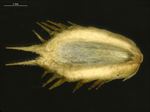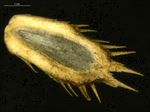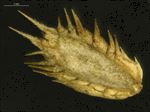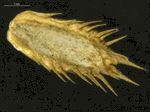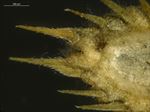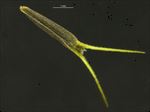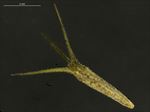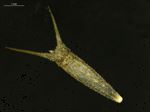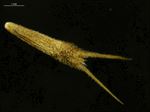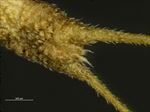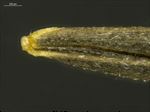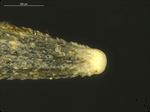Taxonomy
Synedrella nodiflora (L.) Gaertn., Fruct. Sem. Pl. 2:456. 1791
Common synonyms
Blainvillea latifolia var. latifolia; Ucacou nodiflorum (L.) Hitchc.; Verbesina nodiflora L.; Wedelia cryptocephala Peter
Common name
Cinderella-weed, nodeweed.
Description
Propagule or dispersal unit is the fruit with pappus. This species has strongly dimorphic central and marginal fruits. Central fruits are long and slender, carry a pappus of 2-4 long spines, and appear to be adapted to dispersal by animals. Marginal fruits are flattened and winged, and appear to be adapted to wind dispersal.
Central fruits: Fertile part 3.9-5.1 mm long, 0.8-1.2 mm wide, in side view widest in upper part (obovoid), +/- straight, the upper (apical) end narrowing, in cross-section flattened, basal scar (carpopodium) pronounced and well-differentiated, off to the side (oblique) or at least asymmetric, beak (=thinner sterile stalk between seed and pappus) absent, wings absent, fruit surface black or other, smooth (except at cellular level) or with round protrusions or bumps, with simple straight hairs, thickened margin absent, longitudinal ribs present, rarely absent, 3-9, their surfaces smooth or bumpy or notched, with no hairs (glabrous) or simple straight hairs. Pappus type awns or spines, pappus elements all +/- similar, up to 2-5 mm long, in one row, number of pappus elements two to three, persistent, the individual awns smooth or serrated or barbed (by misinterpretation), +/- divergent, +/- straight.
Marginal fruits: Fertile part 3.5-4.5 mm long, 1-1.3 mm wide, in side view widest in upper part (obovoid), conspicuously curved, the upper (apical) end narrowing, in cross-section flattened, basal scar (carpopodium) pronounced and well-differentiated, beak (=thinner sterile stalk between seed and pappus) absent, wings present, 0.5-1 mm wide, fruit surface black, smooth (except at cellular level), with no hairs (glabrous), thickened margin absent, longitudinal ribs absent. Pappus type awns or spines, pappus elements all +/- similar, up to 0.9-1.6 mm long, in one row, number of pappus elements two, persistent, the individual awns smooth or serrated or barbed (by misinterpretation), +/- upright, +/- straight.
Ecology
Herb, seeds dimorphic; the inner with long awns and adapted to attaching themselves to animals, the outer winged and seemingly adapted for wind-dispersal. Tropical regions. Found as a weed of farmlands, wastegrounds, disturbed forests, and along roads.
Native range
Florida, Mexico, Central America, Caribbean, northern South America.Introduced range
Tropical Africa, southern Asia, southeastern Asia and Papua New Guinea, tropical Australia, Pacific islands.
